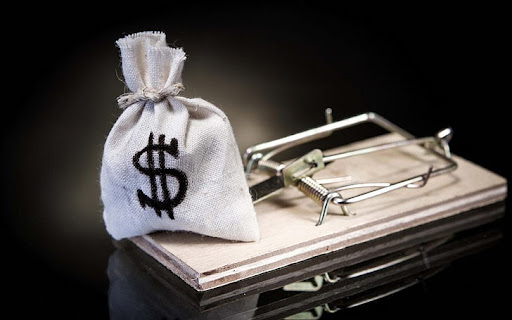You might give it a different name, but if you’ve fallen victim to the consulting trap, you’ll know it.
The consulting trap is what happens when a consultant goes through waves of being busy and not busy. The pressure only builds as your desire to grow increases because the bigger your team is, the more important it is to keep a steady flow of leads coming in.
Otherwise, it’s like building a high performance engine without being able to provide it with the right amount of fuel.
But how can you spot whether you’ve fallen victim to the consulting trap? In today’s post, we’ll take a closer look at the tell-tale signs.
The Scenario
Let’s say that you’re a strategic consultant who works in the IT industry. When you first started out, you weren’t very busy, and so you invested a lot of time and effort into business development and marketing.
Those efforts paid off, and clients started to come your way. Before you knew it, you were busy with client work — so busy, in fact, that you stopped doing marketing and business development because you got busy with client work and didn’t need any more clients. At the time, at least.
Your initial investment in business development, sales and marketing kept you busy for months. However, as your client engagements drew to a natural conclusion, panic started to set in and you realized you had no prospective new clients coming in to replace the engagements that were ending.
When you first started out, all of those investments were like rising to the top of a rollercoaster, and then you coasted back down. But all of a sudden, you’re at the bottom of the tracks and there’s no lift to take you back up again. It looks like you’re going to get stuck.
After the initial wave of panic wore off, you realized that you needed to do something, so you tried to think back to what worked before. You ask yourself, “How did I get the clients that I had?”
That’s when you realized that there wasn’t a real process to begin with. You planned to fix it, but you never got around to it. It’s been in the back of your mind, but you somehow never found the time (or maybe you weren’t sure how to fix it to begin with).
So you tried a bunch of different things, throwing them against the wall to see what stuck. Most of them didn’t, and you realized that it wasn’t a process and that even if it did occasionally work, it was unsustainable — and more importantly, unpredictable.
Does any of this sound familiar? If so, there’s a pretty good chance that you’ve fallen victim to the consulting trap.

Riding the Rollercoaster
Running your consulting business can sometimes feel like being on a rollercoaster. You go through waves of being busy and then not. The busy times are great, but hectic. The slower times might give you a chance to catch your breath, but you start to panic because you’re unsure when the next project will come your way.
When we talk about the consulting trap, we’re talking about this cycle of being busy and then not being busy. You may also have heard it referred to as the hourly billing trap.
The consulting trap happens primarily because when you invest in business development, sales and marketing, you’re often rewarded with new client work. However, providing your services to meet these client expectations can also cause you to stop investing in the activities that brought you the work in the first place. When this happens, you wind up in a valley of that rollercoaster yet again, where your projects have dried up.
That’s when the panic sets in. If you’re like me, you’ve experienced this feeling too many times. It never gets any easier and you’re desperate for a more permanent solution to the problem.Don’t wait until the problem shows itself to take action. Dutch philosopher Desiderius Erasmus famously said that prevention is better than the cure, and that’s certainly true when it comes to the consulting trap.

Why the Consulting Trap is so Deadly
In today’s fast-paced society, most of us are busy delivering the services that we offer, and so it’s easy to fall into a routine of not investing in business development, sales and marketing. That’s particularly true if you haven’t built any of these activities as a process that complements your natural routine of running your consulting business.
The consulting trap is deadly because there’s no way of knowing when you’re going to hit a lull of client activity. Successful consultants should always have plenty of work and be as busy as they want to be. It’s better to have to turn clients away than it is to panic about where your next engagement is coming from.
The single biggest reason why the consulting trap is devastating for your business is that it stops you from running at optimal efficiency. According to the US Bureau of Labor Statistics, around 80% of new consulting companies fail within their first two years. All too often, that failure is down to ineffective business development and poorly-thought-out marketing strategies.
In an ideal world, you’d always be as booked as you’d like to be, with the right amount of flexible time to do whatever you want, whether that’s reinvesting in the business or focusing on your personal life. That means being able to strike the proper work-life balance for you. However, you can’t do that if the leads aren’t coming in consistently.
We all know that working above your capacity can be damaging, especially if you do it for a prolonged period of time. It’s a recipe for burnout and mental health problems, and even if you work every hour that you can to stay on top of things, it’s unsustainable and will eventually lead to disaster.
The statistics back this up, with three quarters of people feeling burned out at work and 83% of full-time workers in the United States saying that burnout at work is affecting their personal relationships. Research has shown that workplace stress in the United States leads to nearly 120,000 deaths and $190 billion in spending every year.
But working under your capacity can be equally as damaging. It can lead to you being so desperate to take on work that you accept everything that comes your way, even if it’s off-brand for the company that you want to build. That can be bad for progress towards your long-term goals, devaluing your brand and causing morale problems. It can lead you and your employees into feeling that you’re just providing your services to the lowest bidders and devaluing what your time is worth.

How People End up in the Consulting Trap
The easiest way to end up in the consulting trap is to treat marketing as something that you only do when you’re not busy with client work. Business development and marketing need to be well- thought-out processes where you continuously invest time. If you think of these activities as a switch to be turned on and off as needed, you’ll always be frustrated with the results and you’ll NEVER leave the trap.
You can also fall into the trap if you over-rely on referrals, which are all well and good but are generally better thought of as welcome bonuses as opposed to a predictable way of generating leads. To put it simply, referrals are unpredictable. There isn’t much you can do to guarantee their consistency.
Then there’s a failure to nurture and develop your relationships with the leads you have, which can prevent you from realizing the potential from the time you’ve already invested. It’s said to cost five times more to attract a new customer than to keep an existing one, and so focusing exclusively on acquisition instead of balancing your investment with onboarding and retention is a missed opportunity.

Conclusion
The consulting trap is a very real threat to consulting businesses of all shapes and sizes, from self-employed consultants to global agencies. The good news is that the first step towards dealing with the trap is to spot that you’re in it.
We’ll be talking some more about the consulting trap in future articles, so be sure to keep your eyes peeled for them and to follow us on social media for further updates. We’d also love to keep the discussion going in the comments, so be sure to share your thoughts so that we can take any feedback on board and answer any questions that you might have.
Want to learn more about the consulting trap? Download our free ebook – How to Solve the Consulting Trap: Fixing the “Not-Busy” Problem. We’ll share everything you need to know about escaping the trap and building a more sustainable consultancy business. Good luck!